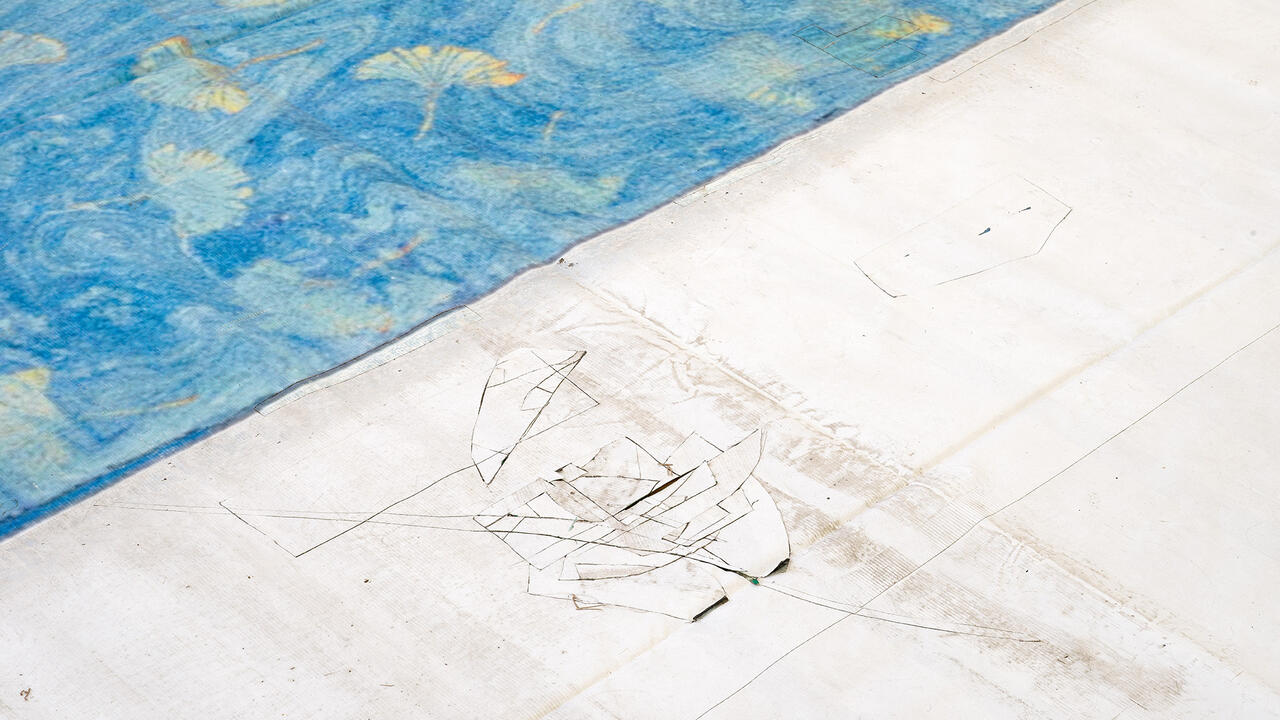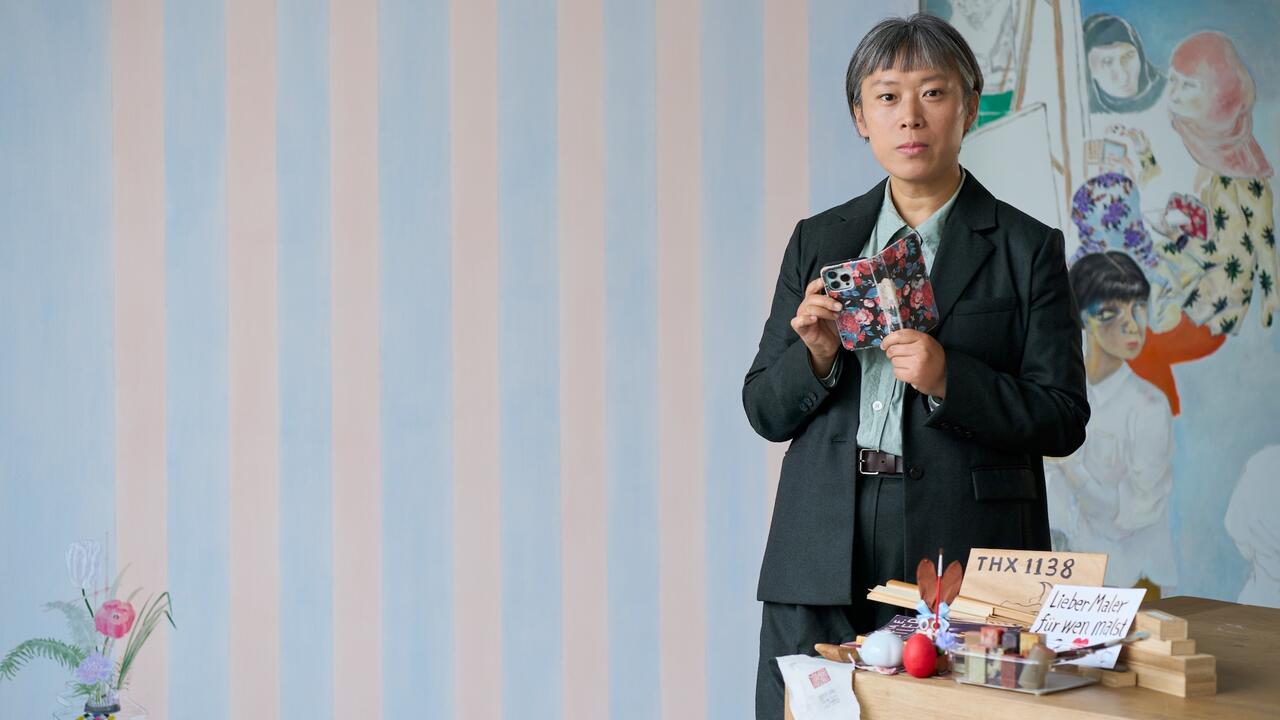A Trace of a Trace
The framing of art and life in Rachel Kushner’s The Flamethrowers
The framing of art and life in Rachel Kushner’s The Flamethrowers

1
In his essay ‘Art and Objecthood’, first published in Artforum in 1967, Michael Fried analyzes Tony Smith’s account of a nocturnal car ride on the New Jersey turnpike:
‘It was a dark night and there were no lights [...] or anything at all except the dark pavement moving through the landscape of the flats, rimmed by hills in the distance [...] The drive was a revealing experience. The road and much of the landscape was artificial, and yet it couldn’t be called a work of art. On the other hand, it did something for me that art had never done [...] its effect was to liberate me from many of the views I had had about art [...] There is no way you can frame it, you just have to experience it.’
For Fried, this passage represents the abandonment of Modernism for mere situations, for what he calls ‘theatre’, and is integral to his denunciation of Minimalist or ‘literalist’ art. The internal relations of the work give way to an experience of endlessness and duration that’s difficult to differentiate from experience in general.
In Rachel Kushner’s brilliant novel The Flamethrowers (2013), set in the mid-1970s, the narrator – sometimes called ‘Reno’ by her companions – is undertaking a project Smith would have understood and Fried would have hated: she’s motorcycling across the salt flats of Utah at extreme speeds, planning to photograph her tracks. But Reno is ambivalent about the framing of her experience after the fact, unclear if it’s really art she’s after: ‘The photographs would be nothing but a trace. A trace of a trace. They might fail entirely to capture what I hoped for, the experience of speed.’
As Reno accelerates across the flats, her ride recalls Smith’s – an experience of temporality, endlessness, artificial but artless: ‘Nothing mattered but the milliseconds of life at that speed. Far ahead of me, the salt flats and mountains conspired into one puddle vortex. I began to feel the size of this place …’
2
It isn’t just any motorcycle Reno is about to crash – it’s a Moto Valera – and Kushner deftly traces the fictional history of that particular machine. Reno has acquired the motorcycle, we’ll learn, because of her relationship to Sandro Valera, an alienated scion of the Valera empire and Minimalist artist with whom she is romantically entangled in New York; Sandro (reluctantly) arranged for her acquire the bike. But Kushner also weaves the larger Moto Valera history into the novel, beginning with its founder T.P. Valera, who fought in World War I, became a Futurist and fascist, then a fabulously wealthy businessman largely responsible for building Italy’s network of modern roads.
Through the Valera motorcycle, Kushner cannily links the art of the 1970s to earlier 20th-century vanguard movements. What Smith and the Futurists have in common – what to a certain degree all historical avant-gardes, according to theorists like Peter Burger, have in common – is a desire to collapse art into life. Italian Futurism expressed this desire, of course, in much more explicit and disastrous political terms than the ‘literalist’ art Fried attacks. ‘We declare that the splendor of the world has been enriched by a new beauty: the beauty of speed,’ reads the Futurist Manifesto (1909), ‘a roaring motor car which seems to run on machine-gun fire, is more beautiful than the Victory of Samothrace.’ (It’s a nice touch that Reno’s childhood hero, the fictional racer Flip Farmer, drives a car called the Victory of Samothrace.) ‘We want to glorify war – the only cure for the world … the beautiful ideas which kill ...’ Motorcycles in Kushner’s book are both instruments of ‘literalist’ art and literal killing machines; the book opens in 1917 with T.P. Valera braining a German soldier with his motorcycle headlamp.
Kushner thus connects Reno and her art-world circle via the Valera bike to a history of 20th-century art (and the century itself) they themselves don’t seem to know – or, as in the case of Sandro, they disavow. When Reno slams headfirst into the salt, she is colliding with the legacy and limits of some of modernity’s most persistent and dangerous dreams: the obliteration of the boundary between art and life, the aestheticization of force and speed.
3
Almost everyone who appears in The Flamethrowers confuses art and life. Giddle, the closest thing Reno has to a friend, is a waitress, but only because she’s obsessed with performing being a waitress: ‘as if I were living inside a film about a lonely woman who threw her life away to work in a diner [...] But the whole thing was in quotes.’ When, at a dinner party, Reno is seated next to a former artist/revolutionary named Burdmoore – a member of the (real) Lower East Side movement called The Motherfuckers – he immediately gets into an argument with a critic, Didier, about the question of theatricality. ‘We were bringing the war home,’ Burdmoore says in defence of one of his tamer happenings, ‘Would it have been better not to stage our dissent?’ ‘But that’s exactly it!’ Didier responds, ‘You staged your dissent [...] it’s important to draw distinctions between real violence and theatre.’
The problem of distinguishing real violence from theatre is central to The Flamethrowers. At the same party we encounter an antique pistol displayed like a readymade on a long metal table. A gift from Sandro to the host, ‘It was a replica of an early 19th-century Colt revolver that had been remade by the Valera Company for Spaghetti Western productions.’ It’s a fake gun that shoots real bullets made by a Futurist-capitalist for westerns all’italiana. Later that night, Sandro will use the prop to inflict actual violence on a Manhattan street.
The Motherfuckers will return to (more extreme) action later in the book, but they are only one instance of art and political violence colliding around Reno. The second half of The Flamethrowers follows the narrator to Italy where she stays with Sandro at the Valeras’ villa just as the family has a run-in with the Brigate Rosse. Following one of the book’s many betrayals, Reno finds herself fleeing the villa into the tumult of Rome, where she lives with a community of young anti-capitalists involved in, among other things, the attack on Sandro’s family. But amid the young revolutionaries, Reno again encounters a problematic blending of art and life: two young men living below Reno are making a film about a young pregnant runaway; she is sleeping with at least one of the men in return for a bed. Her extreme condition is, to them, just material for art: ‘‘‘I’m hungry,” she said to them. “Let’s go eat.” “Say it again,” the one with the camera said …’ They make her perform her real desperation, a theatre of cruelty mistaken for documentary.
My purpose here is to indicate – because to my knowledge no critic has – how subtly but thoroughly Kushner organizes her novel around the evolving (or devolving) avant-garde dream of dissolving the art/life distinction, and how she situates that dream in the historical context of 20th-century fascism, capitalism and anti-capitalist political struggle. All of these things meet in the 1970s art world where art objects are often just the (saleable) traces of the traces of experience. Kushner’s remarkable blending of personal and transpersonal histories and her beautiful, charged prose keeps the book from ever feeling sententious – but it has also allowed critics to ignore or reduce to character psychology Kushner’s dramatization of what remains a central problematic for contemporary art and artists.
4
‘There is no way you can frame it’ – part of the achievement of The Flamethrowers is to frame the liberatory and dangerous energies that attend breaking down the frame that separates art and life. In a sense, this is the novel at its most traditional: Miguel de Cervantes warns us against mistaking courtly romances with real life in Don Quixote (1605); Gustave Flaubert’s Madame Bovary (1856) updates that theme. Kushner’s novel is refreshingly traditional: historical research interacts with historically illuminating fictional creations (Mota Valera, Flip Farmer, etc.). Unlike recent works by, say, Sheila Heti and Tao Lin, Kushner’s novel does not itself challenge the art/life distinction; instead, it shows how fiction is peculiarly suited to tracking the dispersion of art into performance.






















